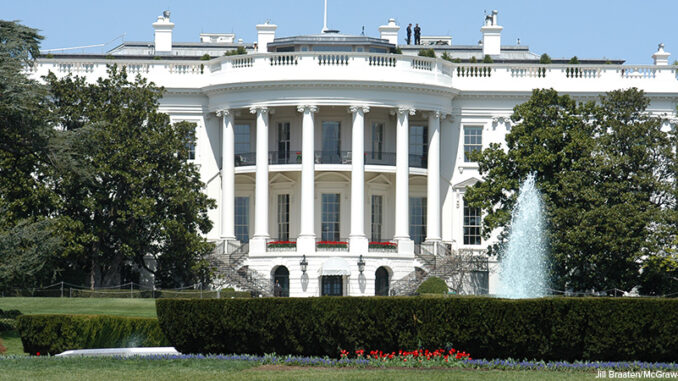
Biden Creates White House Gender Policy Council
March is Women’s History Month, so there’s no better time for President Biden to establish the new White House Gender Policy Council. On March 8, which was International Women’s Day, President Biden passed an executive order to create the new council. Many advocates say that the issue of gender discrimination has taken on new urgency in the past year, due to the disproportionate impact that the COVID-19 crisis has had on U.S. women and girls. Here’s a quick summary of Biden’s executive order:
Section 1: The White House recognizes that gender equality is important for economic reasons as well as for social ones. Therefore, the Biden administration is committed to enacting policies that will work to end gender-based discrimination and to promote equal rights and opportunities for all women. This includes both domestic and foreign policy.
Section 2: This section sets up the council, which will address structural gender discrimination in the following areas:
- the gender wage gap;
- childcare concerns;
- gender equality in education;
- women’s access to comprehensive health care;
- gender-based violence;
- gender inequities brought about by the COVID-19 crisis; and more.
Section 3: A government-wide list of recommended strategies, policies, and procedures will be drafted and submitted to the president by the council within the next 200 days.
Section 4: Directs the recommended plan to be put into place. At the same time, a National Action Plan to End Gender-Based Violence will be developed by the Council in coordination with a Special Assistant to the President. In addition, the heads of all of the impacted agencies will meet with the council twice a year. These agencies will submit an annual report on their progress to President Biden.
Dig Deeper In 1961 President John F. Kennedy established the President’s Commission on the Status of Women. Conduct research to learn more about the goals of this group and what it achieved.
CDC Eases Some COVID-19 Restrictions
Last year at this time, schools and businesses were shutting down as governors across the country put stay-at-home orders into place to combat the COVID-19 virus. Now that many Americans are receiving the COVID vaccine, people are starting to look forward to a routine that resembles what it was before the pandemic began. Last week, the Center for Disease Control and Prevention (CDC) announced that it is now acceptable for people who have been fully vaccinated to gather together indoors, without masks or social distancing. It’s also okay for people who have been vaccinated to gather with unvaccinated family members, as long as the unvaccinated members are considered low-risk.
Everything isn’t back to “normal” just yet, however. According to the CDC, even those who have been fully vaccinated must still wear masks, avoid medium and large sized gatherings, and practice social distancing while in public. The CDC also continues to recommend that people avoid unnecessary travel right now and to get tested within a few days of the trip.
With more and more Americans gaining access to the COVID-19 vaccine, you may have heard people use the term “herd immunity.” “Herd immunity” refers to the idea that, after a certain vaccination threshold number of people who have been vaccinated plus those who have been sick and recovered is reached, even those who aren’t vaccinated are safe from contracting the disease. This threshold number of people to achieve herd immunity depends on the disease. For polio, it is 80 percent; for measles, it is 95 percent. Because COVID-19 is such a new disease, no one accurately knows yet what the threshold is. Therefore, the CDC recommends that everyone (who is able to) should get vaccinated as soon as possible.
Dig Deeper About 11.5% of the American population has received the full COVID-19 vaccination as of March 17. How many millions of people does this percentage represent?
L.A. Builds Tiny Home Village
Los Angeles, California, is facing a massive homelessness crisis. This crisis has only gotten worse since the COVID-19 pandemic forced many more thousands of people out of work. Faced with the need for a creative solution to the problem, Los Angeles has turned a narrow, one-acre strip of land across from a park in North Hollywood into a village of tiny homes for displaced people.

You may be aware of the tiny home trend, but the 39 units of LA’s Chandler Street Village aren’t like what you would see on TV. These homes are very bare-bones: about 64 square feet, with beds and shelving units. They don’t have bathrooms, kitchens, porches, lofts, or other extras. Each unit cost Los Angeles $7,500 to construct. They’re meant only to be temporary housing, offering a safe place to sleep and store belongings while a person figures out his or her next steps. But the village itself is cheerful: the units are brightly painted, and there are picnic tables, a common space, and a centrally-located services trailer with restrooms and showers offered as well. On-site counselors also provide residents with mental health treatment, job hunting, and legal assistance to help them transition out of homelessness.
Los Angeles isn’t the first California city to build tiny homes to fight homelessness. San Jose and Sacramento have already done the same. But the state faces the worst homelessness crisis in the nation. As of 2020, there were about 150,000 people homeless in California. 66,400 of them are located in Los Angeles County alone. The pandemic has increased the number of the homeless and made their struggles more challenging. California’s governor, Gavin Newsom, has pledged $2 billion to build more shelter and address mental health and substance abuse issues. Two more tiny home villages are planned for the North Hollywood area. One will have one hundred units, making it the largest tiny home village in California.
What Do You Think? Imagine that you are designing a small tiny home village with 25 units. Where in your community would you put it? (Think about access to basic needs, such as grocery stores, public transportation, and laundromats.) Draft a plan describing what the village would look like, where it would be located.
Zimbabwe Women Battle Discrimination
All over the globe, the COVID crisis has caused widespread economic hardship. This is especially true in developing nations that were already struggling financially before the pandemic. And within those nations, the group hardest hit has been women. This is certainly true in Zimbabwe. Despite laws that are supposed to protect women’s rights at home and in the workplace, gender disparity remains because those laws are not enforced. As a result, women in Zimbabwe are expected to manage all the household tasks, while often supporting their families financially as well. On top of that, they are not really considered “equals” in the workplace. All businesses are struggling in Zimbabwe due to COVID-related shutdowns, but those owned by women often struggle more than those owned by men due to male prejudices that women are not as capable as men are.
The discrimination faced by Zimbabwe women is not unique to this country. But they do lag behind the male 48 percent of the nation in education, health, and income statistics—according to data recently gathered by the United Nation’s Children’s Fund. Women also face additional challenges. With schools shut down, many mothers must now supervise their children’s educations, in addition to completing their own work and household tasks. The depressed economy makes it an even bigger challenge for women to feed themselves and their children. Furthermore, women are more at risk of contracting the virus, because they must often work in close proximity to one another and can’t socially distance.
